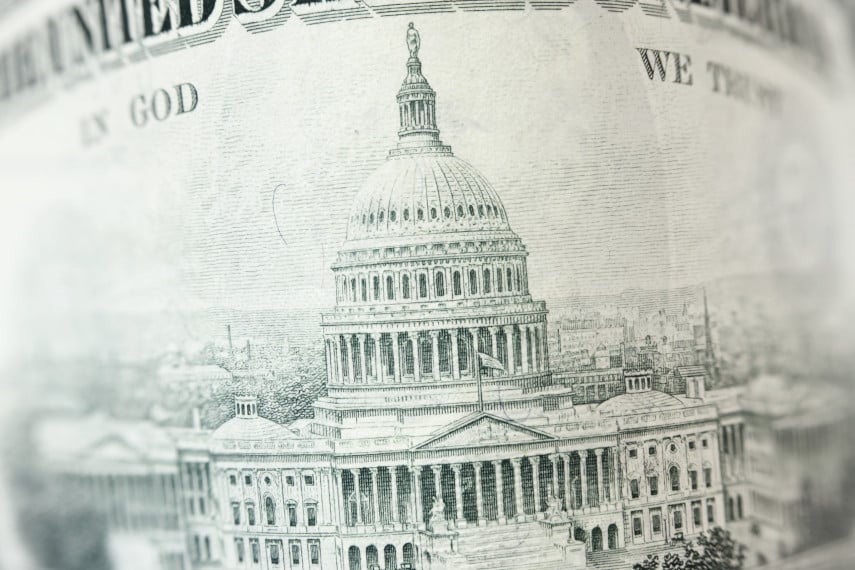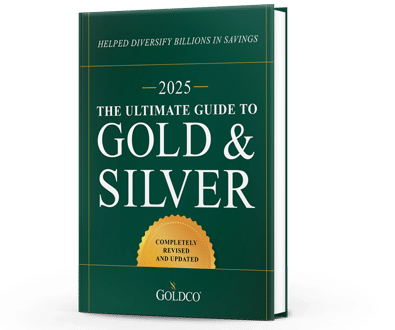6 Indicators of a Potential Recession
It seems that in the media today there are more and more mentions of the dreaded R-word: recession With growing economic uncertainty, the threat of potential recession seems to be growing as...
Economy

If the thought of a $34 trillion national debt seems too big to imagine, that’s probably because it is. It’s a sum so huge that it’s nearly impossible to comprehend.
Many people like to demonize the uber-rich like Elon Musk, with his $200+ billion net worth. But the US national debt is like more than 170 Elon Musks put together.
Remember back in 2008 when the national debt had just crossed the $10 trillion mark for the first time, and the US government bailed out the banking sector to the tune of an astronomically high $700 billion?
Well today less than two decades later the national debt is more than three times larger, and the annual budget deficits are double or triple the size of that 2008 bailout. Yet we’ve become so accustomed as taxpayers to these massive deficits that we no longer bat an eye.
If you want to visualize how much money that is, you can head over to Demonocracy, which has provided great visual images of how much money the federal government is spending.
$100 million will fill a standard pallet to a height of about five feet with stacks of $100 bills. Ten of those pallets makes $1 billion.
$1 trillion is enough pallets to fill at least 4 football fields. And the $34 trillion national debt is enough to stack 100 pallets in dozens of stacks each double the height of the Statue of Liberty.
It’s an incredible sum of money, something that you have to see to even try to comprehend it. And that debt situation is going to get even worse.
As this fiscal year has progressed, the once relatively rosy budget deficit projections have gotten worse, with the budget deficit expected to hit nearly $2 trillion this year. And the expectations for future years are getting even worse.
By 2034 the national debt is expected to reach over $56 trillion. And if previous projections are anything to go by, that could end up being even higher.
Back in 2014, the Congressional Budget Office expected the total increase in the national debt to be about $6.3 trillion from 2014 to 2023. Instead, it ended up being about an $18 trillion increase, or nearly triple the projected growth.
If CBO’s current analysis ends up being similarly underestimated, that means that we could actually see a $100 trillion national debt by 2034.
Does that seem far-fetched? Certainly. But so did the idea of a $34 trillion national debt just 10 years ago.
The way Congress is spending money, the $2 trillion deficits we run every year today may seem quaint within the next decade. And that could especially be the case if the US economy falls into recession soon.
Remember that in response to the sharp, but short, recession of 2020 the federal government ran a budget deficit of over $3 trillion. How much larger a deficit might it run if we enter another 2008-style financial crisis, in which markets fell more than 50% and the banking system was on the verge of collapse?
If the US government’s debt situation is starting to run out of control right now, with a supposedly “strong” economy, how much worse could it get once the economy enters into recession?
Let’s get real. The $34 trillion (and growing) national debt will never get paid back in full.
The federal government continues rolling over the debt, hoping that no one fully cashes out. It’s like a high stakes game of hot potato, with everyone wanting to gain the interest off Treasury securities in the meantime, but no one wanting to be holding the potato at the end.
So what happens when things start to unravel? And what would that look like?
We’re rapidly reaching an inflection point in which the government is going to have to borrow more money just to pay the interest on the debt it has already accumulated. With an expected interest cost of $1 trillion this year, that sum could only continue to grow as the national debt increases.
Once the government gets into a cycle of having to borrow more just to pay the interest, it could get locked into an inflationary debt spiral. We would likely see the Federal Reserve being forced to monetize debt in order for the government to find a purchaser, with inflation rising as a result, just like it did after 2020’s debt monetization.
This means that the increasing national debt could have a severely negative impact on the value and purchasing power of your savings and assets. If $34 trillion in debt isn’t enough reason to start trying to protect your wealth, what would it take? $56 trillion? $100 trillion? Or more?
People who see the writing on the wall have already started to try to protect their financial well-being with safe haven assets, including gold and silver. With gold and silver growing in price over time, versus the US dollar which falls in value every year, it’s only natural that many people choose gold and silver to protect their financial security.
While the US dollar has lost 87% of its value since 1971, gold has gained over 6,000% in value. And during the 2008 crisis, gold gained 25% during the same period that markets fell more than 50% (October 2007 to March 2009).
Since that time, gold has gone on to set numerous all-time highs, most recently pushing to over $2,400 an ounce last month. The recent pullback in the prices of gold and silver offers you a chance to buy now before the next bull market gets going.
Whether you choose to protect your tax-advantaged savings with a gold IRA or silver IRA, or whether you decide to protect your cash and cash equivalents with direct purchases of gold and silver delivered to your home, Goldco has precious metals options available for you.
Goldco works with mints around the world to source gold and silver coins and bars, ensuring not only that the gold and silver you buy from us is 100% authentic, but also ensuring a steady supply of gold and silver during times of high demand.
With over a decade of experience helping Americans from all walks of life protect their savings with gold and silver, Goldco has become one of the most trusted gold companies in the country. Our more than 6,000 5-star reviews from satisfied customers speak to the lengths we go to provide premium gold and silver products and exemplary customer service.
If the rising national debt, persistent inflation, and threat of recession have you worried about your financial well-being, call Goldco today to learn more about how you can help safeguard your savings with gold and silver.

